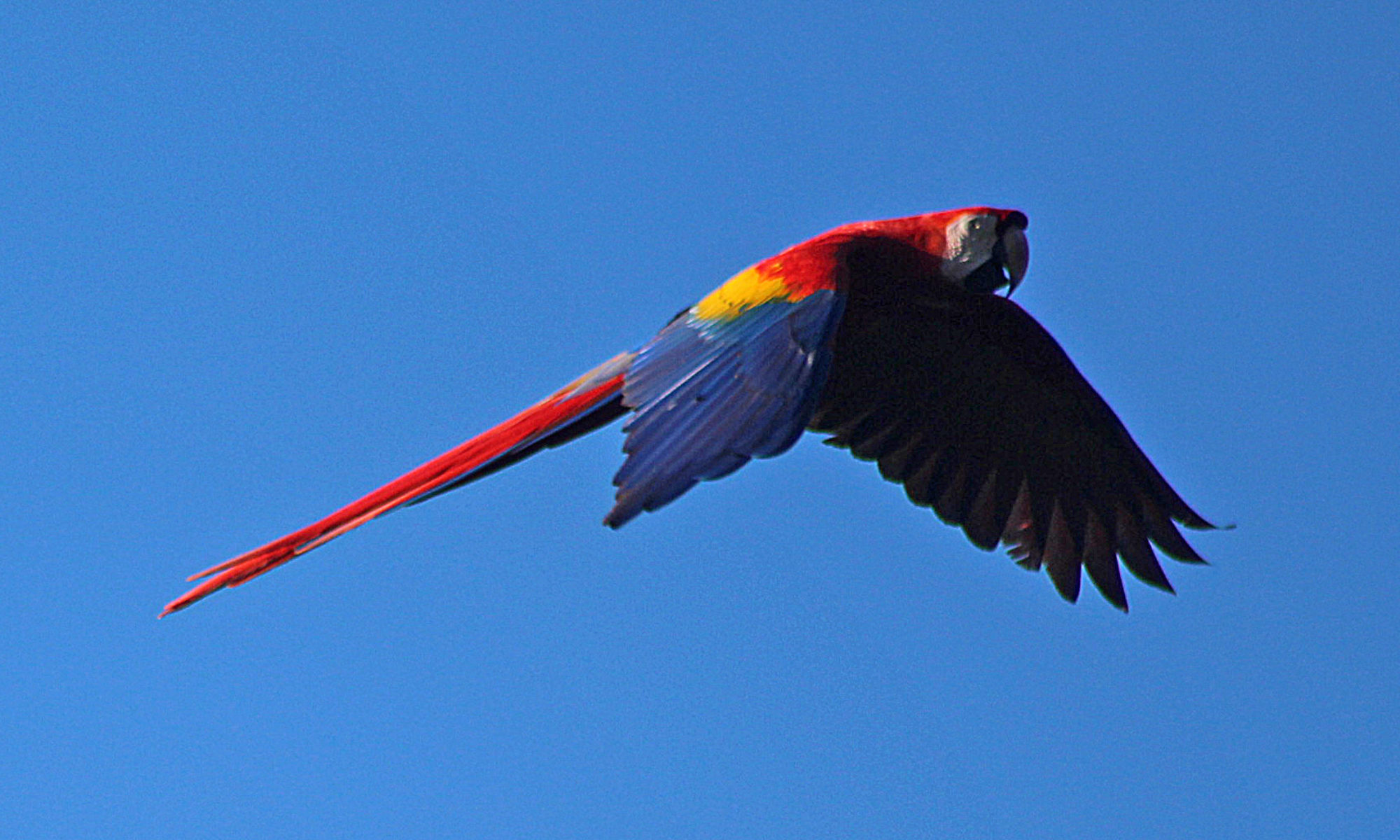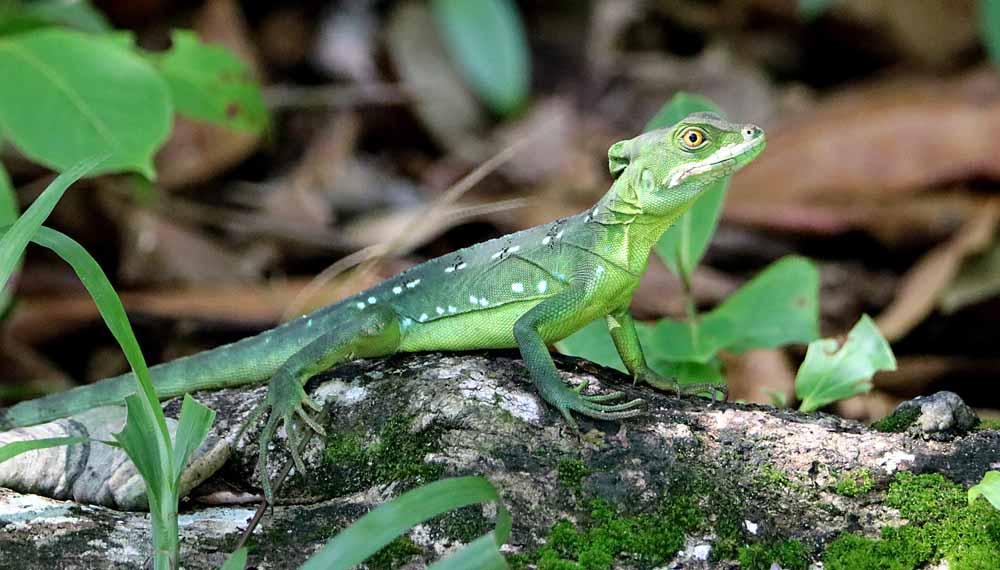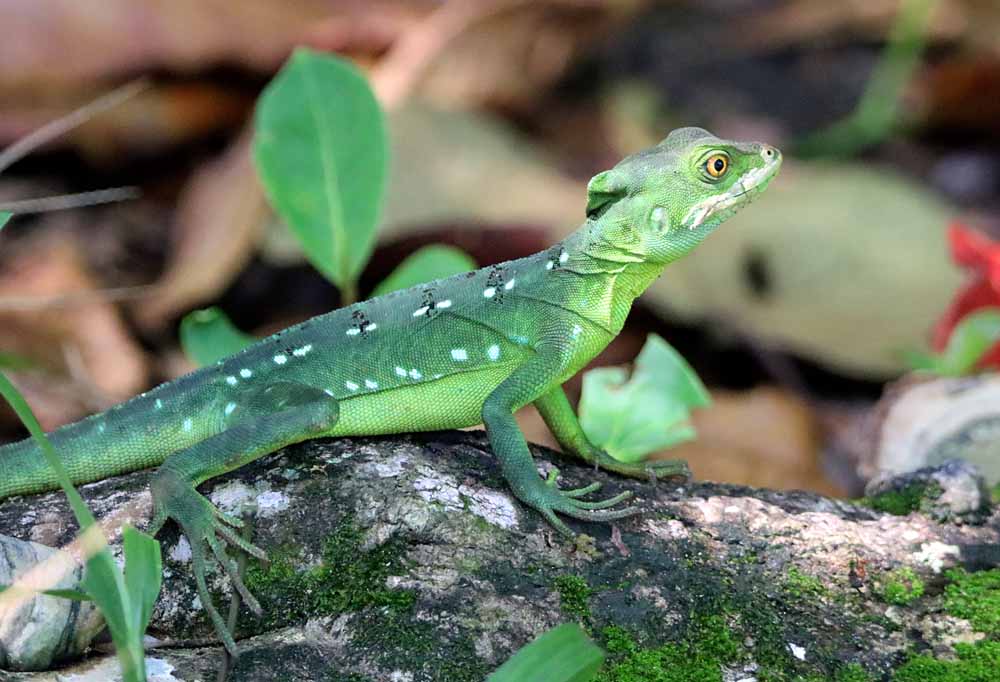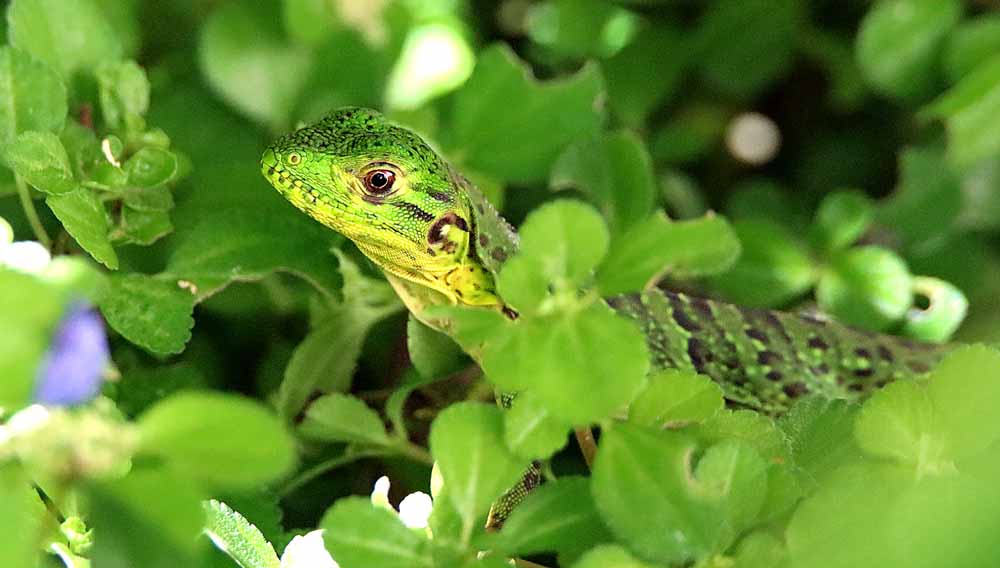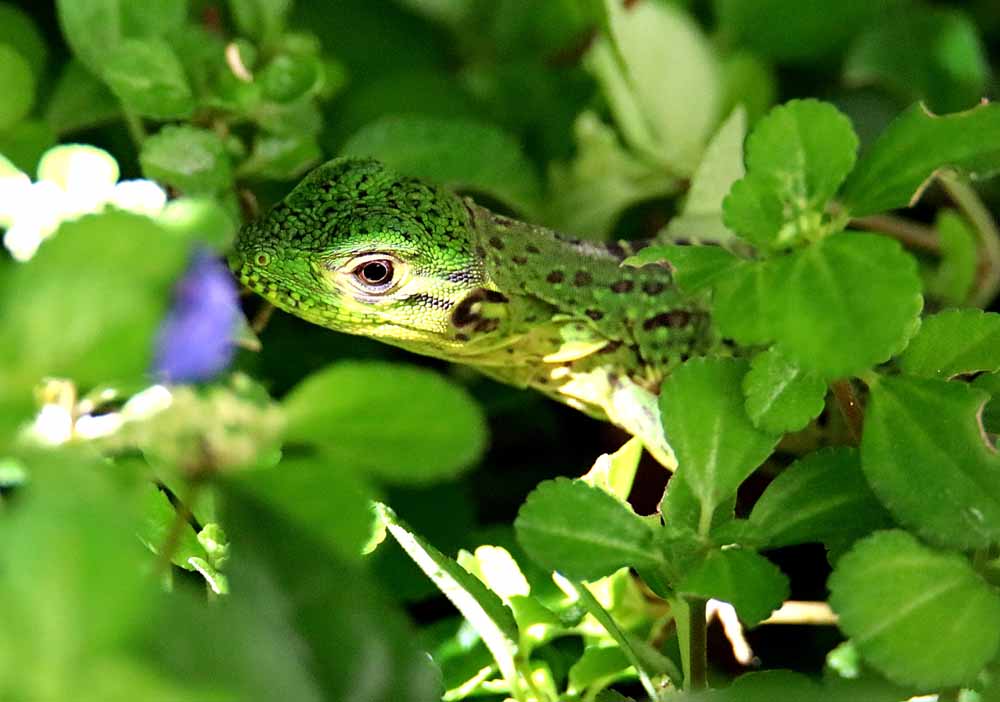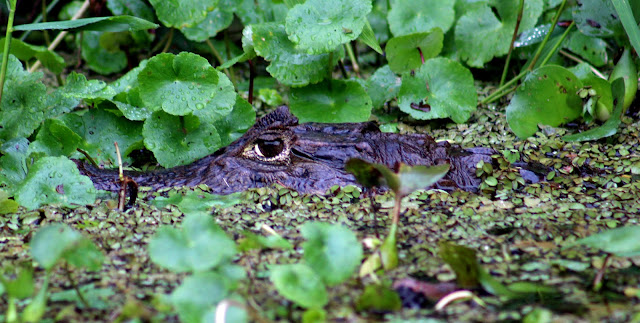As a nickname, that might be considered sacrilegious by some people, but the nickname has a long history of this lizard walking on water and most everyone knows the story of Jesus walking on water and Peter not having the faith to follow him without sinking. In Costa Rica there are three species of basilisks and they all “walk on water” (actually run very fast) as we saw this one pictured here do 🙂 . . .
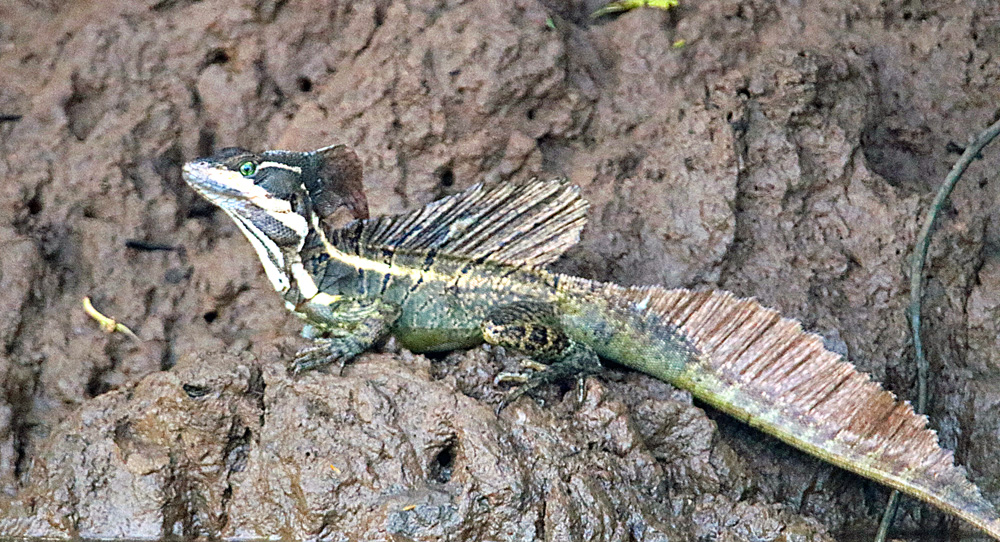
- THIS ONE: Common Basilisk, Basiliscus basiliscus (my gallery link) is found only on the Pacific Slope of Costa Rica and here some people also use the common name of “Brown Basilisk” instead of the preferred “Common” and thus in Spanish you can see both common names of “Basiliscus Café” and “Basiliscus Común” or “Lagarto Jesús Común.” Yeah, learning nature in two languages and both sides of the country can be confusing! 🙂 Especially when different people and different books use different and overlapping names! 🙂 Scientific names are the clearest!
- THE OTHER BROWN ONE: Brown or Striped Basilisk, Basiliscus vittatus (my gallery link) is found only on the Caribbean Slope. And the Spanish names used in Costa Rica are variously “Basiliscus Café” and the preferred “Basiliscus Rayado.” In addition to the unique locations, these two brownish basilisks have different markings or stripes and different crests with this Basiliscus vittatus having smaller crests and mostly on the head only. And I think this one is browner, and thus deserves the Brown name more. But if you see a brown or brownish one, you can know the name by knowing which slope you are on! (The Continental Divide) Location, location, location! 🙂
- THE EASY ONE IS GREEN: Emerald or Green Basilisk, Basiliscus plumifrons (my gallery link & 1 pix below). This one is found on both slopes of Costa Rica! 🙂 The Spanish common names are like the two English names: “Basilisco Esmeralda” or “Basilisco Verde.” And it is never confused with either of the other two! 🙂
That’s our fun biology lesson for today! And I apologize for not remembering that I did a similar post back in October. Just blame it on my dementia! 🙂
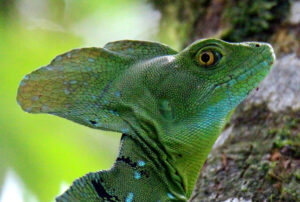
¡Pura Vida!
See the Day Trip Gallery: 2025 January 7 — Rio Tarcoles & Punta Leona
